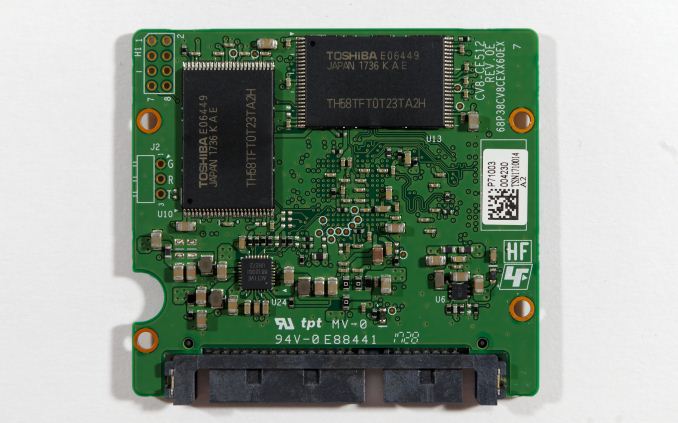The Plextor M8V SATA SSD Review: Toshiba 3D TLC In a Mainstream Drive
by Billy Tallis on March 20, 2018 8:00 AM ESTConclusion
In terms product positioning, the Plextor M8V is a value-oriented product. However positioning can be deceiving, and as we've seen on many tests the M8V punches well above its weight, matching the performance of top-tier SATA drives. The overall picture is that the M8V is generally a bit slower and less power efficient that most of the other recent SSDs using 64L 3D TLC NAND, but the performance gaps are never huge. Unlike many entry-level SSDs, the M8V retains almost all of its performance as it fills up; it doesn't need to be treated carefully to keep it performing well.
The Plextor M8V is the first SSD we've tested using the combination of Toshiba's 3D NAND and the Silicon Motion SM2258 controller. The other SM2258 drives we've tested recently used Intel and Micron 3D NAND, which appears to be slightly superior given the results from the M8V. But many of the differences may be due to firmware rather than inherent properties of the different 3D NAND designs.
Toshiba's own drive with their 64L 3D TLC is the TR200, which uses a DRAMless controller and clearly suffers the performance penalties that brings, but it also makes the TR200 one of the lowest-power SSDs on the market. The M8V is quite a bit faster than the TR200 and preferable in almost any use case.
Compared to the M8V, top-tier SATA SSDs like the Crucial MX500 or Samsung's 860 EVO/PRO will rarely deliver noticeable performance or battery life improvements. The M8V is good enough in both respects, even though it isn't the best.
The Plextor M8V was announced six weeks ago but is not yet available for purchase from the major online retailers. Plextor has not published official MSRPs, so we can't make any definitive buying recommendations for the M8V yet. When it does hit the shelves, the M8V may not be competitively priced at first. In today's market, being competitively priced means for the M8V that it has to undercut the Crucial MX500, currently 25–27¢/GB and with a longer warranty. The exception is the 128GB M8V which is in a capacity class with far less competition. For that model, we expect a price of around $45 (35¢/GB) would be highly competitive, but it could end up anywhere between that and the $60 the Crucial BX300 currently sells for.











8 Comments
View All Comments
edgineer - Tuesday, March 20, 2018 - link
What's the actual capacity of this drive, 476 GiB? I hate having to use a calculator/guessing.Billy Tallis - Tuesday, March 20, 2018 - link
As with any other 512GB drive, the usable capacity (before partitioning) is 512,110,190,592 bytes.Dragonstongue - Tuesday, March 20, 2018 - link
Crucial MX200 500GB ends up as 465gb usable Win 7 64 build after formatted for useCrucial MX100 256 ends up with 238GB usable
frenchy_2001 - Tuesday, March 20, 2018 - link
That would be because Windows displays GiB (2^30 bytes) and not GB (10^9 Bytes).https://en.wikipedia.org/wiki/Gibibyte
bug77 - Thursday, March 22, 2018 - link
During formatting, some space is reserved for the file system. That is not a limitation of the drive, nor does it make the drive have a smaller capacity.You don't like file system's overhead? Use a different file system. Oh wait, you can't do that on Windows :D
Holliday75 - Wednesday, March 21, 2018 - link
These new bots are everywhere. Been seeing them all over Facebook posting on a few of my favorite professional sports teams pages.FunBunny2 - Thursday, March 22, 2018 - link
but, but, but... Mark just promised that they've been driving the culture at Facebook for years, years I say, to improve user experience. don't you believe him?????leexgx - Sunday, March 25, 2018 - link
can you please fix on mobile view in "Print this article" the "Thanks to" box overrides page width limits so when scrolling up and down it sometimes go left and right